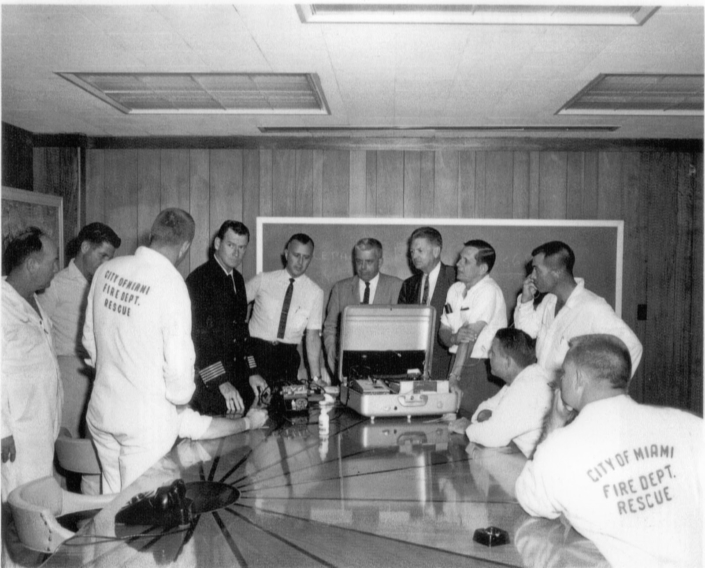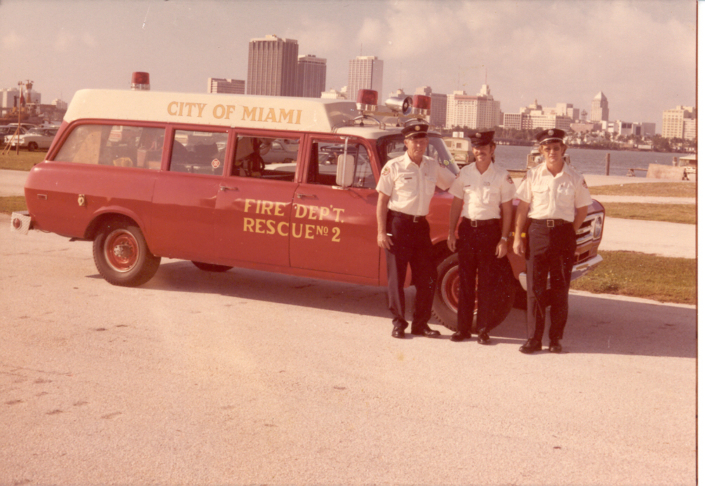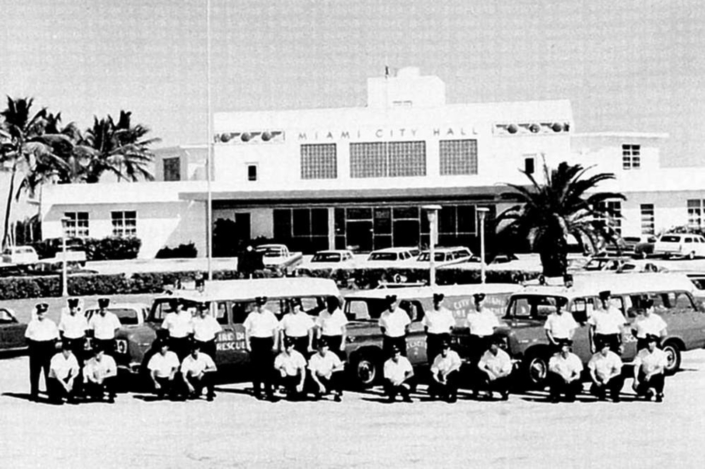Citation:
National EMS Museum People Files, NEMSM-0003 [Please include Folder/Person’s Name]
Dr. Eugene Nagel
At a 1964 meeting of the International Rescue and First Aid Association, Dr. Eugene Nagel met some rescue officers who told him that despite their good CPR, all their patients kept dying. Mobile intensive coronary care units combining CPR, resuscitative drugs and early defibrillation were being tried in a few American cities, but the systems were requiring that doctors be aboard the vehicles. Nagel thought a disease-specific vehicle carrying a physician was not reasonable and wanted to find a more practical way to bring these lifesaving treatments to the field. He proposed to Miami-Dade fire officials to link a mobile intensive care vehicle to hospital-based medical command and control with radio voice telemetry.
A telemetry package was put together in a milk crate, and a defibrillator was ordered from a little-known Seattle company called Physio-Control. The first LifePak 33 shook apart within two weeks of service. It was returned to the company to be redesigned. Fire-rescue personnel were taught to defibrillate, start IVs, administer drugs and intubate without guidelines, textbooks or legislation. Through this work, Nagel helped form the Medical Committee of the International Association of Fire Chiefs in the late 1960s.
He later served on one the first federal HEW review committees that gave grants to communities for EMS systems. He saw the global importance of EMS as well and lobbied successfully in Washington in 1973 to overturn President Richard Nixon’s veto of the EMS Systems Act. His later posts included Harbor General Hospital (UCLA) in 1974 and Johns Hopkins in 1976, where he was a fire surgeon with Baltimore County Fire Department. Nagel was a frequent contributor to EMS Magazine during the 1970s and early 1980s and served on the editorial advisory board for many years.
Submitted to NEMSM May 2008 by Cygnus Business Publications; Photos courtesy Tom Watson and Charlie Perez
Additional Resources
Doctor Eugene Nagel’s papers reside at the Wood Library and Museum of Anesthesia:
https://www.woodlibrarymuseum.org/archives/finding.php?id=422







